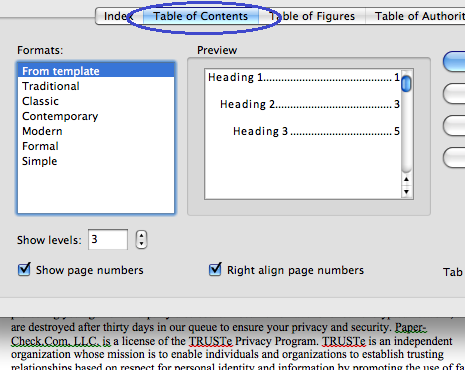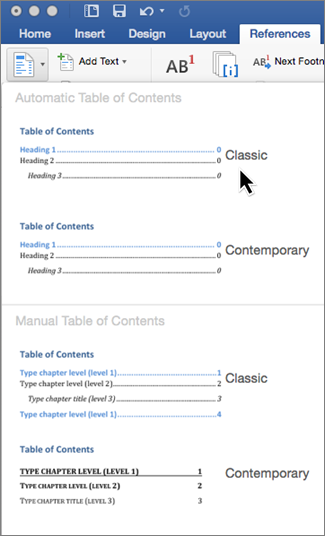

- #HOW TO FORMAT TABLE OF CONTENTS WORD HOW TO#
- #HOW TO FORMAT TABLE OF CONTENTS WORD UPDATE#
- #HOW TO FORMAT TABLE OF CONTENTS WORD PC#

#HOW TO FORMAT TABLE OF CONTENTS WORD HOW TO#
Like most law school students I spent a lot of time searching through tutorials on how to put Microsoft Word to better use. We did spend some time on basic formatting (double spacing, underlining, using the spacebar key), but not nearly as much as I think would really benefit future lawyers. However no one, including my legal writing professor, spent much, if any, time on formatting. Writing was very high on the list and was a subject taught, at least in some regard, in every single law school class I took. Fortney | 1:43 PM in Employment LawĪs a fresh law school graduate I remember well what we did and did not learn in law school.
#HOW TO FORMAT TABLE OF CONTENTS WORD UPDATE#
This allows you to quickly update your table of contents (either the whole thing or just the page numbers) after making amendments to your document.Easily Create a Table of Authorities for a legal brief with Microsoft Word
#HOW TO FORMAT TABLE OF CONTENTS WORD PC#
Click on one of the options in the “Table of Contents” menu.īoth Mac and PC versions of MS Word feature an “Update” or “Update Table” button next to the “Table of Contents” menu.On Mac, the process is slightly different: If you want to customize your table of contents, click “Custom Table of Contents” instead. This will create an automatic table of contents (including a title saying “Contents”) using the first three “Heading” styles. Place the cursor where you want your table of contents to appear.Once you’ve formatted your headings and subheadings, it’s time to create a table of contents. Thank you for subscribing to our newsletter! Creating Your Table of Contents For example, each chapter heading could be formatted using “Heading 1” and an 18pt font, while subheadings could use “Heading 2” and a 16pt font. You can do this by using a different “Heading” style for each level.

It’s often a good idea to distinguish between different headings and subheadings. If you change the “Heading” style after this, all the headings that use this style will be updated automatically. To apply customized headings, go through each heading and subheading in your paper and click the required style. In the new window that opens, pick the formatting options required.Īlternatively, you could apply formatting to one heading or subheading, select the formatted text, right-click the “Heading” style in the menu and select “Update to Match Selection.” This will change the style to match the highlighted text.To create a table of contents, the styles we need are labeled “Heading.” MS Word comes with a number of default “Heading” styles (e.g., “Heading 1,” “Heading 2”). The “Styles” menu can be found on the “Home” tab in MS Word. However, there’s an easier way: Use Microsoft Word’s “Style” options to create a table of contents that can be updated at the click of a button! How to Modify Styles If you like doing things the slow way, you could type this out manually and painstakingly modify it every time you make a slight change to a subheading. Whenever you write a longer paper, particularly a thesis or dissertation, you’ll need to include a table of contents. How to Create a Dynamic Table of Contents in Microsoft Word


 0 kommentar(er)
0 kommentar(er)
